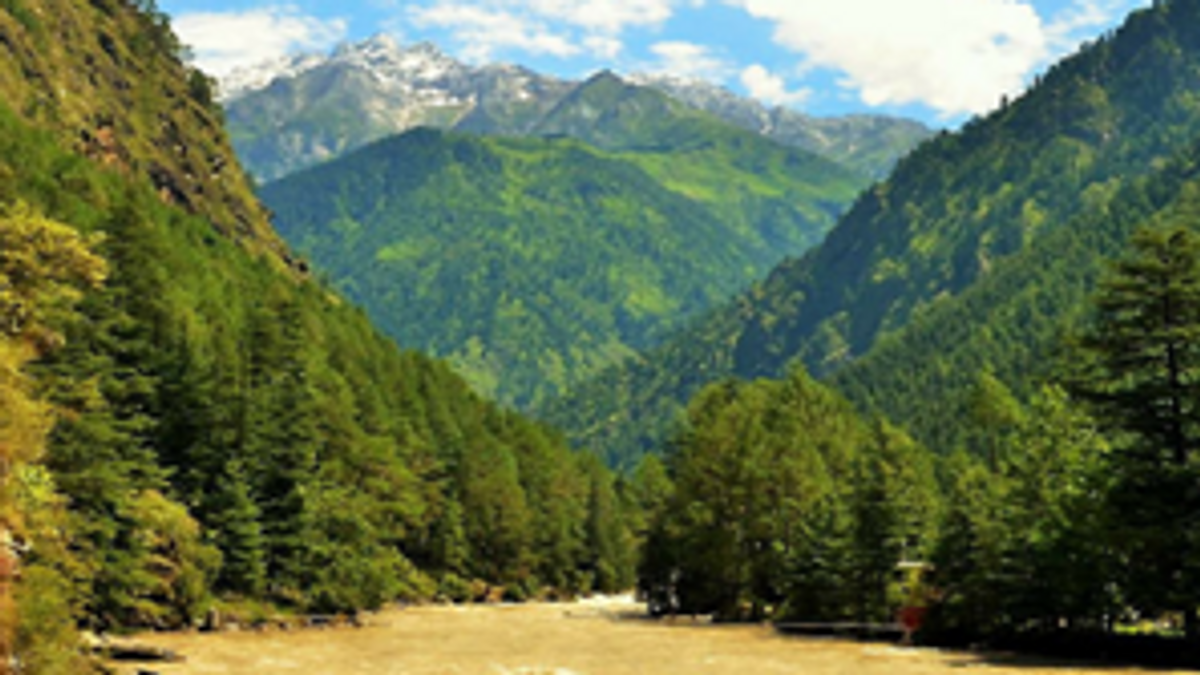
Increasingly Unstable Himalayas
The majestic Himalayas
The Himalayan mountains is unarguably the most majestic sight in the world. It is the highest mountain in the world and still rising up due to the undergoing sub-soil activities. It is not only ‘Him’ Aalay (meaning home for snow) but also a natural ‘Aalay’ (meaning home) of extremely rich flora and fauna of unlimited biodiversity. Whereas there are large stretches of snow cover including at the world’s highest peak, there are some barren Rocky Mountains too below the snowline and above the green zones. Besides all these, there are vast areas of green-covered mountains having plenty to offer to mankind.
As per Ayurveda, the Himalayas has a treasure of rare medicinal plants. It has also been Aalay to some holiest of the ancient temples, origins of some holiest of the rivers, a site of holiest Kailash mountains for the Hindus, where numerous saints opt to meditate peacefully under extremes of environments. Above all, its gigantic size, scenic beauty, religious connotations etc draw huge tourist population. Hence, developing the Himalayan region for tourism through transportation, infrastructures and public conveniences has been long overdue for the respective govts. While trying to fulfil those obligations of development, more often than not, it is being over-exploited much beyond a thin line of balancing act with nature. In this process, the Himalayas is becoming increasingly unstable in various aspects. It is a live mountain, on moving tectonic plates, creating strong tremors every now and then.
Changing landscape and constitution of the Himalayas
The Himalayas continues from the Hindukush in north-west, to Myanmar in the north-east. In the process, it touches upon vastly differing landscapes of arid Afghanistan & Ladakh to the lush green Arunachal. In the process, it wraps itself with varying snow blankets, accommodates numerous glaciers, gives birth to numerous rivers & springs and all these provide incredible imaginations that an artist can draw. An artistic view of the Himalayas can be seen below. The Himalayas presents a unique appearance of lush green lower heights, the depleting vegetation above the 2.5 km altitudes and varying amounts of snow wrap above the snow lines. It has varying grades of both steep and shallow slopes, both firm and loose consistencies of its rocks and soils; its location over the tectonic fault lines makes it unstable in some parts and human indulgence of expanding inhabitation and developmental activities accentuate instabilities in almost all its entire stretches.
The Himalayas has long retained its natural topological geology despite facing several abuses in terms of human inflicted deforestation, overexploiting natural resources and extending the human habitation due to population spurt. It has been showing numerous signs of human made climate changes in the forms of disappearing or collapsing glaciers, extremes of temperatures and increasing furiousity of its numerous rivers creating havoc. The territorial expansionism by China in to the Himalayas has mandated India in creating all types of defence infrastructures all along its length.
Causes of the instabilities
The Himalayas have been site of geological instabilities due to various reasons, most prominent being it sitting over the long Asiatic prefectures of tectonic plates. Varying degrees of earthquakes, geological fragility and landslides have been present from time unknown. These phenomena are exacerbated by rainfall, cloudbursts, seismic tremors, overburdening by rock material, removal of basal lateral support, loosened soil structure, as well as many human-induced/created causes. Accordingly, world attention is on Himalayan occurrences esp in context to the multiple and increasing landslides accentuated by the infrastructure development, could be natural.
When major parts of Himalayas were uninhabited, most such incidents used to go unnoticed and unreported. However, in recent decades and centuries, the wrath of Himalayan instabilities at heights as well as in the proximities of road & infrastructure developments are becoming more and more catastrophic or troublesome. It is widely believed that mud/landslides along the cut slopes for roads/rails have become far too frequent. These landslides are not only blocking the roads but even causing damages to the inhabitations / villages down the slopes with losses of homes and lives.
Causes of frequent landslides in the Himalayas include the cut-slopes, loamy class soils, sedimentary rocks under the soil further complicated by fragile lithology and quake-prone geology. To be specific, phyllite rocks are most susceptible to landslides followed by shales, schists, sandstones, gneiss, granites and quartzite. Himalayan geology is abundant in these rocks and soils. There are data from various sources that >60% of the mud/landslides in Himalayan region occur in the rainy seasons. The rain water percolating under the soil (esp alluvial) make it lose and any triggering factor lead to mud/landslides. Trees with deep roots (tap roots) hold the soil firm and partially negates sliding tendencies. On the other hand, trees having shallow roots are often counterproductive.
In the Himalayas, slopes of the mountains are invariably cut to make roads and rails. A good engineering practice mandates adequate stabilisation of most of the cut slopes esp in the steep-sloped and unstable mountains. Road cuts on very shallow slopes, having tap root trees and bob-vulnerable types of soils are seldom known for significant mud/landslides. However, height of the road cuts, channel incision undermining the road cuts and above all, the steepness of the hillside upslope proved significant factors in causing significant and devastating landslides.
Oversight & neglecting the laid down engineering practices and norms for cutting the mountains slopes and stabilising the cut slopes. However, what is followed in practice in the Himalayan ranges, is seldom as per books, highly arbitrary, unscientific and symbolic ones. This is the commonest reason why major mud/landslides along the cut-slopes are so rampant, often threatening the adjacent habitations. In many cases, the namesake or symbolic stabilisation processes are afterthoughts. While loads of the mud/rocks above the cut slopes could be millions or billions of tons, the slope stabilisation measures (thru cementing, putting pillars or erecting walls) may be good for only a few hundreds or thousands of tons. As a result, whenever there are excitation of land/mudslides (like earthquakes, rains or other events), those symbolic stabilisation are unable to prevent the landslides.
Himalayan instabilities in various forms have been present for ages but of late, it’s relationships with people are of great consequences, often of a vicious cycle. On one hand, unhealthy infrastructure development activities, extending habitat on mountains and deforestation are causing erosion of soil, disappearances of vital water sources as well as climate changes. On the other hand, instabilities of the mountains are inflicting heavy losses on the people incl glacier bursts, sliding/subsidence of overcrowded and overpopulated cities on slopes, burial of several hamlets/villages in mud/landslides and so on. It is believed that over 160 natural Himalayan springs have dried up and over 50 have become seasonal.
Conclusions
The Himalayas sitting over the tectonic fault lines is naturally vulnerable to instabilities and disruptions of several kinds. Human indulgence of creating infrastructures and habitats in the mountains without adequate consideration to the safety norms is the principle cause of the increasing devastation through mud/landslides triggered by the seismic activities. Keeping a balance between nature and human activities assumes greatest significance. These basic concerns must be acknowledged by all stakeholders in the region.







